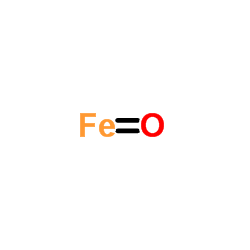Fe3O4 nanoparticles with daunorubicin induce apoptosis through caspase 8-PARP pathway and inhibit K562 leukemia cell-induced tumor growth in vivo.
Gen Zhang, Bin Bin Lai, Yan Yan Zhou, Bao An Chen, Xue Mei Wang, Qun Lu, Yan-Hua Chen
文献索引:Nanomedicine: Nanotechnology, Biology, and Medicine 7(5) , 595-603, (2011)
全文:HTML全文
摘要
Nanomaterials can enhance the delivery and treatment efficiency of anticancer drugs, but the mechanisms of the tumor-reducing activity of ferrous-ferric oxide (Fe(3)O(4)) nanoparticles (NPs) with daunorubicin (DNR) have not been established. Here we investigate the synergistic effects of Fe(3)O(4) NPs with DNR on the induction of apoptosis using K562 leukemia cells. Fe(3)O(4) NPs increased the ability of DNR to induce apoptosis in both adriamycin-sensitive and adriamycin-resistant K562 cells through the caspase 8-poly(ADP-ribose) polymerase pathway. Fe(3)O(4) NPs combined with DNR also effectively inhibited the tumor growth induced by the inoculation of K562 cells into nude mice. The increased cell apoptotic rate was closely correlated with the enhanced inhibition of tumor growth. Biodistribution studies in xenograft tumors indicated that Fe(3)O(4) NPs could be potentially excreted from the body via the gastrointestinal system. In conclusion, our study suggests that Fe(3)O(4) NPs combined with anticancer drugs could serve as a better alternative for targeted therapeutic approaches to cancer treatments.Copyright © 2011 Elsevier Inc. All rights reserved.
相关化合物
| 结构式 | 名称/CAS号 | 分子式 | 全部文献 |
|---|---|---|---|
 |
氧化亚铁
CAS:1345-25-1 |
FeO |
|
Enhancement of the photocatalytic activity of Ferrous Oxide ...
2014-07-01 [Chemosphere 107 , 136-44, (2014)] |
|
Controlled synthesis of spinel ZnFe2O4 decorated ZnO heteros...
2013-09-07 [Chem. Commun. (Camb.) 49(69) , 7656-8, (2013)] |
|
Use of tar pitch as a binding and reductant of BFD waste to ...
2014-08-01 [Chemosphere 109 , 143-9, (2014)] |
|
Ferrous iron oxidation in moderately thermophilic acidophile...
2010-10-01 [Can. J. Microbiol. 56(10) , 803-8, (2010)] |
|
Interaction of polyacrylic acid coated and non-coated iron o...
2014-02-10 [Toxicol. Lett. 225(1) , 57-65, (2014)] |